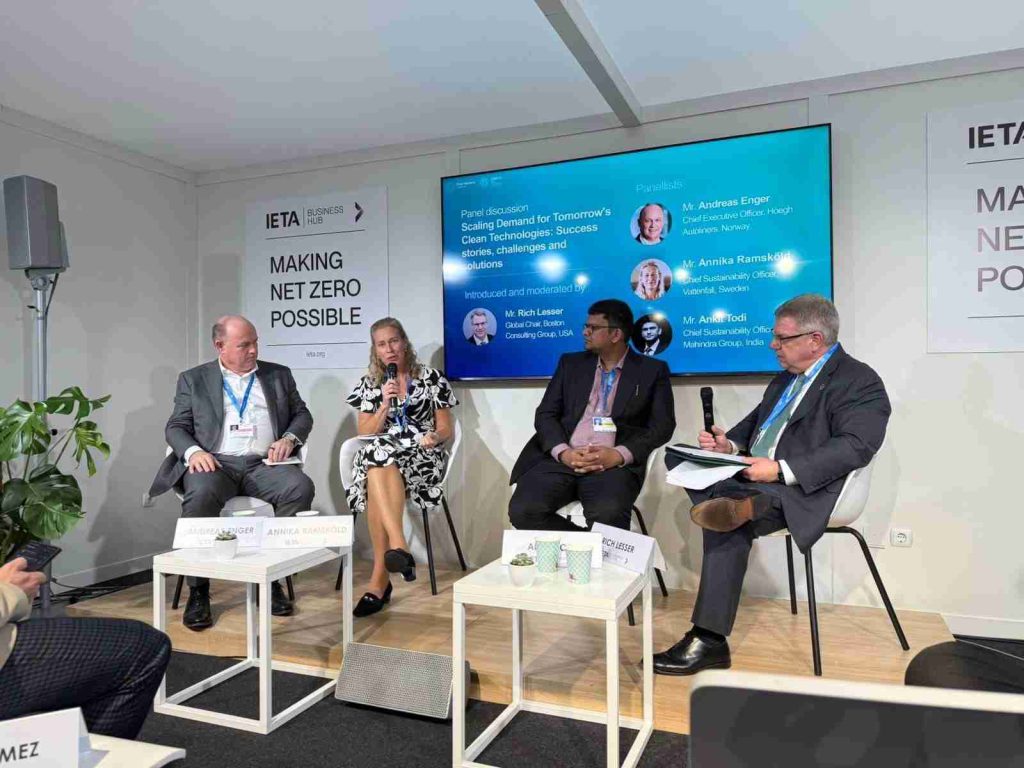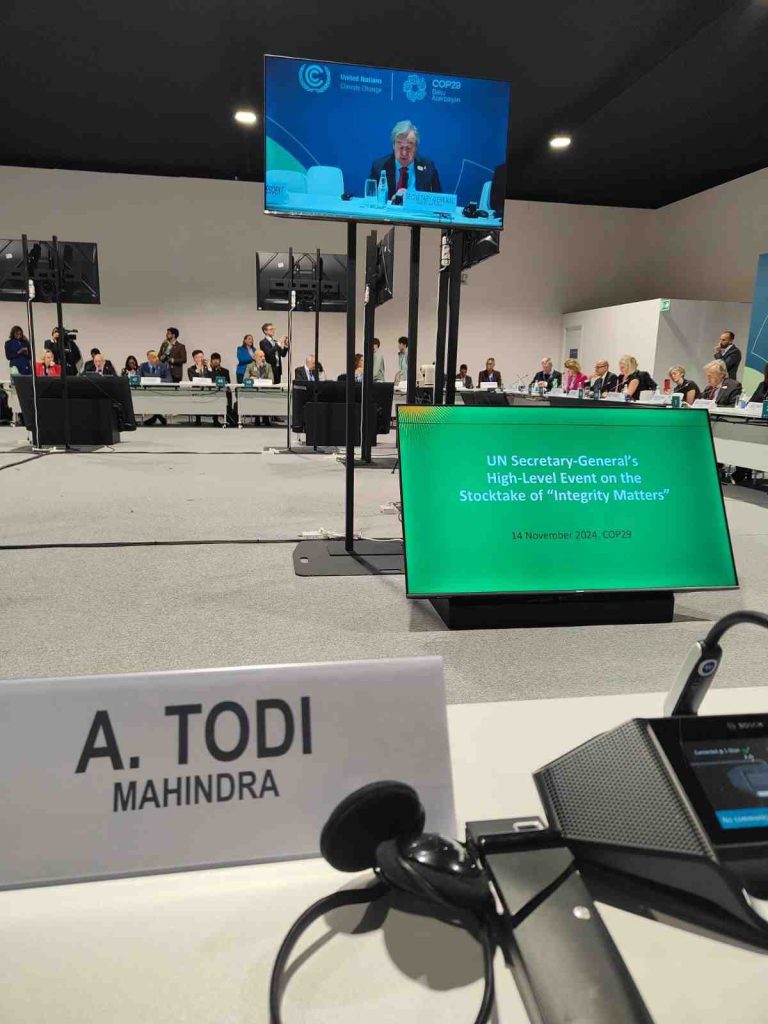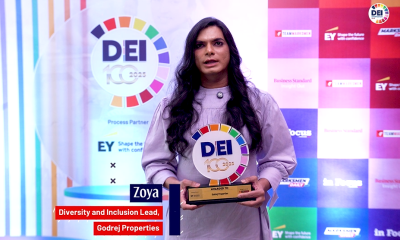Published
7 months agoon
By
Ankit Todi
By Ankit Todi
In a world reeling from heatwaves, flooding, and extreme weather events, sustainability has moved from the sidelines to centre stage. As the Chief Sustainability Officer at the Mahindra Group, I have the privilege of helping shape and accelerate our planet-positive agenda across one of India’s most diverse and far-reaching business groups. As we mark World Environment Day, I want to reflect on where we stand today, what we’ve learned, and how we can catalyse collective action.






At Mahindra, our view is clear: sustainability is not a trade-off. Economic outcomes and environmental outcomes are not at odds. In fact, many of the most impactful climate actions today also make the strongest business sense.
Take renewable energy. With falling input costs and policy momentum, solar and wind projects are now more cost-effective than fossil-fuel-based sources. Similarly, investing in energy efficiency allows companies to cut emissions while improving margins. These are not cost centres—they are competitive advantages.
But it would be disingenuous to suggest that every climate action delivers an immediate ROI. Some steps—such as managing hazardous waste or embedding low-emission materials—require regulatory nudges or ecosystem-wide collaboration. These are still essential to build long-term resilience. At Mahindra, we’ve structured our sustainability playbook around this practical understanding. We focus on what we call “planet-positive” businesses.
Our work spans two key pillars. The first involves minimising our environmental footprint by reducing direct emissions, managing waste responsibly, ensuring water positivity, and sourcing renewable energy across our manufacturing, real estate, and operational value chains. The second pillar focuses on portfolio transformation—building and scaling businesses that are green by design. Whether it’s electric vehicles, net-zero resorts, or climate-resilient farming solutions, our ambition is to lead by example.
Sustainability is no longer about doing less harm. Instead, it is about doing more good.
Across our ecosystem, we are embracing partnerships—with suppliers, startups, governments, and global platforms. Through these relationships, we can build the new capabilities, policy frameworks, and behavioural shifts needed to accelerate change. A good example is our engagement with climate tech startups. From smart energy solutions to circular economy pilots in tire recycling, these collaborations are expanding what’s possible.
India’s clean energy transition is a generational opportunity. As a fast-growing economy, we must chart a unique decarbonisation path that balances growth with sustainability. This requires robust domestic policy—and international recognition that emerging markets face different transition challenges. Through our participation at forums like COP, the World Economic Forum, and the United Nations Global Compact, we aim to bring India’s voice to the forefront while learning from global best practices.
Domestically, we are seeing encouraging signals. Over the past 18 months alone, India has advanced policies on emissions disclosure, waste management, and extended producer responsibility for plastics, batteries, and more. Sectors such as cement and steel now have clear targets to reduce emission intensity. What’s critical is that these regulations are pragmatic and rooted in on-ground realities. Policymaking must enable, not just enforce.
The road ahead will also require a focus on climate adaptation, particularly in vulnerable sectors like agriculture. Heatwaves are already impacting crop yields, raising food prices, and destabilising livelihoods. Solutions such as drip irrigation, climate-resilient seeds, and precision farming tools are no longer optional—they are essential. We must also consider the social dimension of sustainability, including equity, inclusion, and economic opportunity.
Another critical lever is innovation. Every business must experiment with pilots, test disruptive ideas, and scale what works. Whether it’s integrating AI for predictive maintenance in manufacturing, deploying digital twins in building energy optimisation, or embracing circular design in automotive, innovation will separate leaders from laggards. We must move beyond incrementalism.
This brings me to a personal learning: climate action is not the job of a single department. It requires engaging every stakeholder—from business heads and investors to engineers, farmers, and consumers in a language that they understand. Sustainability leaders must be able to translate intent into impact across functions, industries, and cultures. They must be multilingual—and not just in this understanding of “language”, but equally in perspective.
At Mahindra, I’ve seen this play out across our companies—from policy engagement to community partnerships. Take our work in waste management. It began with compliance but is now expanding into new business models, pilot innovations, and ecosystem collaborations. Similar stories exist in water conservation, responsible sourcing, and materials science. It’s this internal energy that gives me hope.
Equally important is how we engage with youth. The next generation of consumers, employees, and leaders care deeply about purpose, transparency, and planetary health. If we want to attract the best minds and hearts, we must offer more than just profits—we must offer progress.
As World Environment Day reminds us, the work ahead is immense. But the momentum is real. From policy corridors to factory floors, from digital labs to farms, sustainability is being redefined—as both an ethical imperative and a growth strategy.
The transition won’t be easy. But it will be worth it.
As I often say: Be good. Do good. Build better.
Let’s get to work.
The author is Chief Sustainability Officer, Mahindra Group


The silent, stony guardians of Idar


CredAble and Citi announce a global tech partnership to digitise trade finance and e-invoice validation


Thyrocare Appoints Rajdeep Panwar as Chief Commercial Officer


Structure of Enterprise Scale Digital Transformation


C-Suite Conversations with Rajesh Goenka, CEO of Rashi Peripherals


Zoya, Diversity and Inclusion Lead at Godrej Properties

